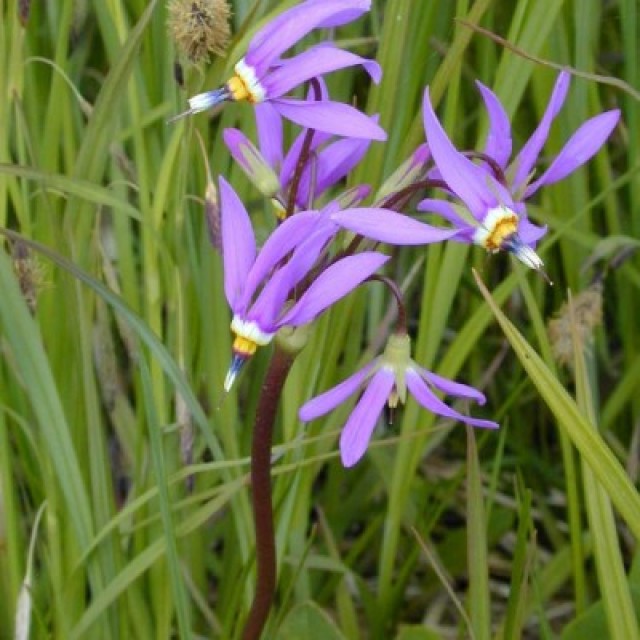COMMON NAME
Darkthroat shootingstar
SCIENTIFIC NAME
Dodecatheon pulchellum
ALSO KNOWN AS
few-flower shooting star, western shooting star
Plant family
Primrose (Primulaceae)
Plant group
Wildflowers and Herbs
Darkthroat shooting stars are perennial herbaceous plants native to western North America.
30 reports
12+
OBSERVERS
30+
OBSERVATIONS
Identification hints
Darkthroat shootingstars have striking flowers that are reflexed backwards and rise on a leafless stem from a basal rosette of leaves at the base of the plant. The petals of darkthroat shootingstar flowers are magenta to purple in color, with a pop of yellow in the "shooting" part. The fruits are many-seeded capsules that break open near the tip.
Did you know?
There is no information available about this species.
DISTRIBUTION IN TH U.S.
Alaska
,
Arizona
,
California
,
Colorado
,
Idaho
,
Montana
,
North Dakota
,
Nebraska
,
New Mexico
,
Nevada
,
Oregon
,
South Dakota
,
Utah
,
Washington
,
Wyoming
HABITAT
Darkthroat shootingstars thrive in woodlands, wet meadows, coastal prairies, along streams and slopes from 4000 to 7200 ft (1200 to 2200 m) in elevation, and in generally moist shady areas.
ATTRIBUTES
Flowers
Flowers of darkthroat shootingstar look like darts that are magenta to lavender with dark tips, facing downward, atop long upright stalks. The floral parts are in groups of five. Petals are ¼ to ½ in (10 to 15 mm) long. The anthers are arranged in a tube that is less than ¼ in (less than 5 mm) long, with a thin ring of yellow/orange, leading to a dark maroon/black pointed tip. The anthers themselves are a little longer, and yellowish to maroon to black.
Fruits
The flower develops into a 5-parted fruit, ¼ to ½ in (5 to 15 mm) long, smooth to hairy, with each valve splitting open to release the tiny black seeds. The fruit points upwards on erect stem, greenish-brown when mature.
Bloom Time
Darkthroat shootingstar typically blooms between April and August depending on the location.
See Menu
- 2021 Chicago Botanic Garden. All Rights Reserved.
-
Creative Commons
BY-NC-SA 4.0 - Terms of Use
- Privacy Policy
- Data Sharing and Citation Policies
- 2021 Chicago Botanic Garden. All Rights Reserved.



